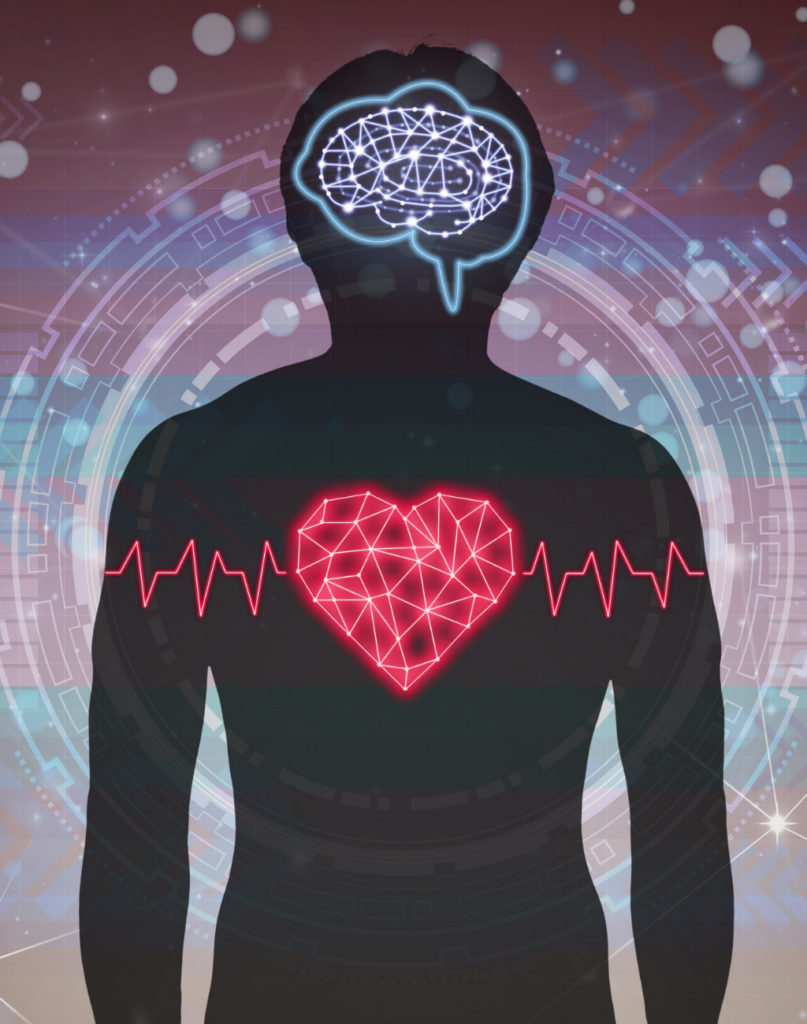
MIND
- How does our brain work?
- Where do our thoughts come from?
- What is the impact of our thoughts on our body?
We know that the mind and body are connected but do we know how?
Part of The Art of Undoing is devoted to exploring the mind. If “the mind is what the brain does”, then in order to explore the mind, we have to start with the brain.
We use lecture, discussion, reflection, mental rehearsal and meditation to help us examine our thought processes and transcend or transform the negative ones. When we have the space to reflect, we can examine our thoughts.
Science has shown us that roughly 90% of the thoughts we have today, we had yesterday and that we have 60-70,000 thoughts a day!
Many of these thoughts are not only repetitive, they are often negative and can influence which chemicals we create in our bodies. Negative thinking can literally create chemicals, which can damage our bodies. Even if we know this, it is still hard to stop those thought patterns!
Undoing those thought patterns is a skill we can all practice and develop and just like any other skill can be engaging, fun, challenging, uncomfortable and intimidating to start. Fortunately, once you start this process it is simple, low cost and not as time consuming as you may think.

Meditation
Worry, anxiety, and stress can be more than distractions. Constantly replaying in your mind daily problems and fears can affect your mental and physical health.
Controlling your attention as you meditate can help you feel more relaxed and at peace. And this peacefulness often lasts far beyond the meditation itself. So when stress appears hours later, you have the means to redirect it.
Meditation lets you become more awake and more purposeful about your actions. It teaches you how to respond, rather than react, to situations in your life.
Meditation sounds simple. But it takes discipline to remain still in body and mind. You have to block out the world around you and quieten your thoughts. Ideally it requires practicing at least 10 to 20 minutes five times a week to get the most out of your meditation.
Scientifically proven benefits include: reduced stress, less anxiety, improved emotional health, enhanced self-awareness, better focus, can generate kindness, improved sleep, helps control pain, can decrease blood pressure.
Heart & Brain coherence
Physiologically, coherence describes the degree of order, energetic coordination and stability in the body’s systems such as the cardiovascular, immune, nervous and hormonal systems. Coherence can be seen as an optimal state in which the heart, mind and emotions are aligned and in sync.
Meditation practices can enhance brain coherence, while breathing and visioning exercises can enhance the hearts coherence. Put the two together and there are many benefits!
When coherent, you build resilience. This resilience:
- Enhances your ability to maintain composure during challenges
- Improves family, workplace and social harmony
- Reduces fatigue and exhaustion
- Promotes the body’s natural regenerative processes
- Improves coordination and reaction times
- Enhances your ability to think clearly and find better solutions
- Increases access to intuitive intelligence


Neuroscience
Everything we do changes the brain in some way. When we practice a skill, the brain regions we use actually grow bigger, and when we don’t use parts of our brain, these regions shrink. This is what scientists call neuroplasticity.
In neuroscience these days, there is a lot of focus on how different brain areas do different things. In order for the brain to work as an integrated whole, the different brain regions need to send and receive information to and from each other. This is done through the brain’s white matter. Think of white matter as being like fibre optic cables connecting the various modules—the brain’s version of the internet.
One of the most intriguing findings that emerges from brain research is that meditation increases the amount of white matter in the brain. Unlike most skills, practicing meditation doesn’t just train a few specific brain areas. It develops the channels of communication between them.